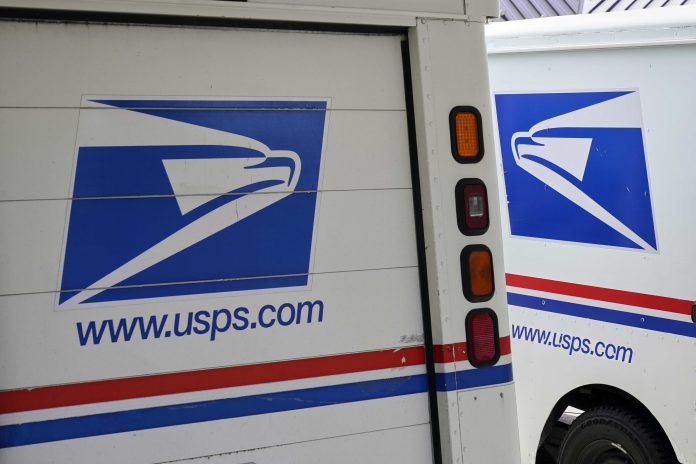
By DAVID SHARP
Associated Press
The U.S. Postal Service wants to save $3 billion annually on changes that reflect its greater reliance on streamlined regional networks — while retaining local mail delivery times of one to three days and track some delivery schedules with greater precision.
Election mail won’t be affected, officials said.
The proposal, announced Thursday, would adjust mail delivery times while maintaining a commitment to a maximum five-day delivery for the flagship “Ground Advantage” nationwide and a maximum three-day delivery for local first-class mail.
Postmaster General Louis DeJoy said the changes to take place next year are necessary to “enable us to operate more efficiently and reliably, grow our business and give us a chance for a viable future” after an 80% drop in first-class mail since 1997 and a corresponding growth in packages. All told, the Postal Service has amassed more than $87 billion in losses from 2007 through 2020.
Details were unveiled by the Postal Service ahead of a Sept. 5 meeting in which the proposed changes will be discussed with stakeholders before being submitted to the Postal Regulatory Commission.
Election mail and holiday shipments won’t be affected because the proposed changes would not take place until the next calendar year, officials said. Medications also should continue to be delivered at their current speed, or faster, under the proposal, officials said.
The proposal reflects the Postal Service’s move to overhaul its processing and transportation network with an emphasis on large regional hubs, something that is already beginning to take place in Atlanta; Richmond, Virginia; and Portland, Oregon. Changes to better utilize existing ground networks mean the Postal Service must adjust pickup and drop-off times between post offices and processing plants, a process that will increase the speed of some of the mail, officials said.
This proposal aligns with the organization’s mandate to be financially self-sufficient while continuing to deliver to every address across the nation six days a week. If adopted, 75% of first-class mail will see no change from the current service standards, and around two-thirds of mail will be delivered in three or or fewer days, the Postal Service said.



















